Join me for a relaxed and inspiring travel sketching workshop in the heart of one of Italy’s most beautiful villages. Using ink and watercolour, we’ll capture the timeless charm of Monte Castello’s medieval streets, sun-drenched piazzas, and sweeping Umbrian landscapes. My workshops focus on simplifying complex scenes, finding your personal sketching voice, and embracing the imperfections of on-location sketching.
 Participants will work with portable materials — pens, travel watercolour sets, and sketchbooks — ideal for capturing moments on the move. Monte Castello’s unique, car-free setting means we can sketch in peace, surrounded by ancient stone buildings, flower-draped balconies, and panoramic views without the interruption of traffic. It’s a dream location for artists and travellers alike, offering endless inspiration at every turn. Whether you're new to sketching or an experienced artist, this is your chance to slow down, observe deeply, and sketch your adventures.
Participants will work with portable materials — pens, travel watercolour sets, and sketchbooks — ideal for capturing moments on the move. Monte Castello’s unique, car-free setting means we can sketch in peace, surrounded by ancient stone buildings, flower-draped balconies, and panoramic views without the interruption of traffic. It’s a dream location for artists and travellers alike, offering endless inspiration at every turn. Whether you're new to sketching or an experienced artist, this is your chance to slow down, observe deeply, and sketch your adventures.
Materials for the course will be available in the ICA Art Supply store in Monte Castello, but if you prefer to bring them from home, you will need: pencil (B or 2B), eraser, pen with waterproof ink (fineliners are a good option: 0.3, 0.5, 0.8 by brands such as UniPin, Micron, Copic, etc), watercolour brushes: one large (#10 round) and one small (#4 round or 1/4inch dagger), watercolour sketchbook (at least 200gsm, 300gsm preferred), watercolour set (12 colours is fine, artist grade preferred – St Petersburg White Nights, Rosa Gallery, Roman Szmal, Royal Talens Van Gogh (higher end student grade), Daniel Smith, Winsor Newton are all good brands and variety of price points), pot for water, cloth to wipe brush.

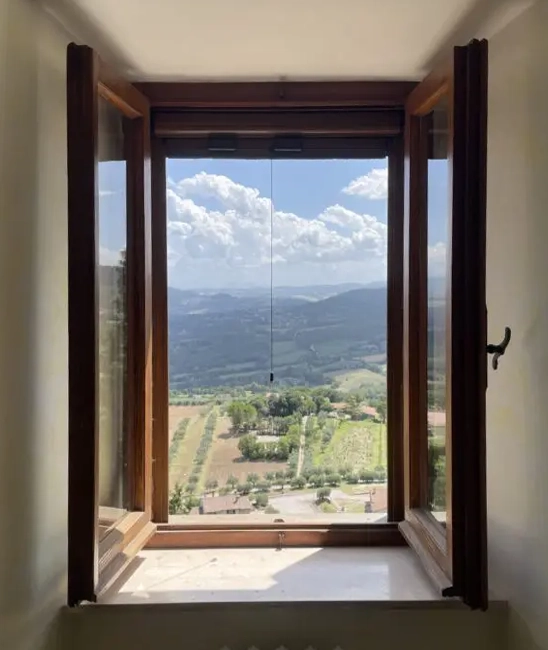 Participants will be housed in the remarkably well-preserved Umbrian hill town of Monte Castello di Vibio. Your workshoppackage is all-inclusive, providing welcome and departure services and airport transfer from the Rome Fiumicino, Leonardo Da Vinci Airport (FCO) aboard our comfortable private bus, single occupancy accommodations with shared bath (a wide range of upgrades with private bath are available), 3 meals per day Monday-Thursday, Prosecco brunch and dinner on Saturday and Sunday (no meals are served on Friday, our excursion day. Your workshop includes one excursion per week and many additional options are available on weekends for an additional fee. Of course, 24/7 access to facilities and 24/7 bi-lingual support.
Participants will be housed in the remarkably well-preserved Umbrian hill town of Monte Castello di Vibio. Your workshoppackage is all-inclusive, providing welcome and departure services and airport transfer from the Rome Fiumicino, Leonardo Da Vinci Airport (FCO) aboard our comfortable private bus, single occupancy accommodations with shared bath (a wide range of upgrades with private bath are available), 3 meals per day Monday-Thursday, Prosecco brunch and dinner on Saturday and Sunday (no meals are served on Friday, our excursion day. Your workshop includes one excursion per week and many additional options are available on weekends for an additional fee. Of course, 24/7 access to facilities and 24/7 bi-lingual support.
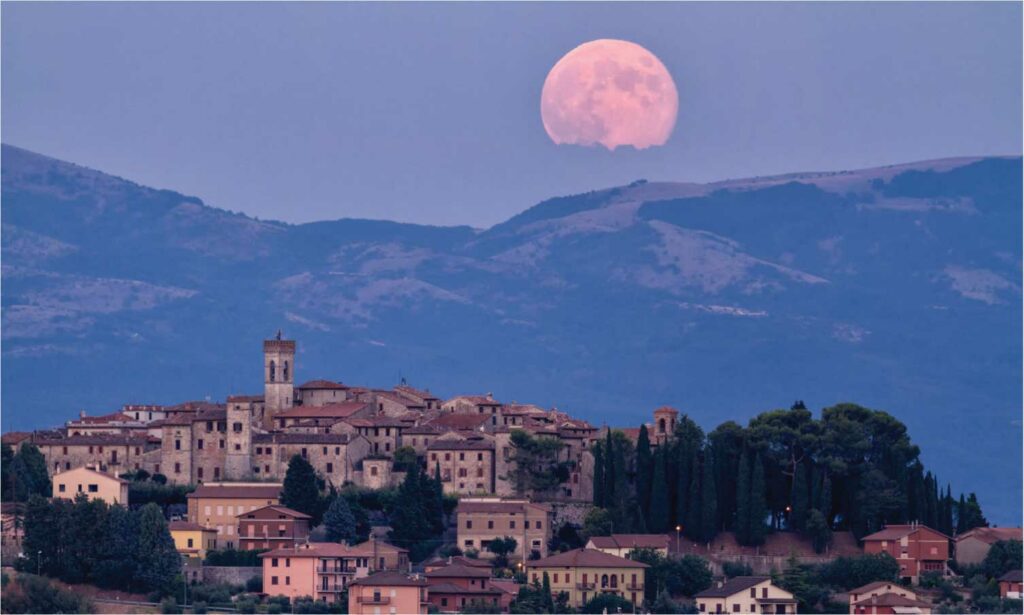
 Our in-depth animal sculpture workshop will allow you to immerse yourself in your art. Nick will demonstrate the importance of observation, show you how to make an emotional connection with your subject and realize your own creative vision. Our extended workshop format allows plenty of time for instruction and practical work.
Our in-depth animal sculpture workshop will allow you to immerse yourself in your art. Nick will demonstrate the importance of observation, show you how to make an emotional connection with your subject and realize your own creative vision. Our extended workshop format allows plenty of time for instruction and practical work.
Under Nick’s expert guidance, you will make your own animal sculpture. Combining a mix of one-to-one and group demonstration and tuition, Nick will teach you building techniques and help you hone your modeling skills. No prior experience is needed and all the tools and materials you’ll need are provided.
Participants will be housed in the remarkably well-preserved Umbrian hill town of Monte Castello di Vibio. Your workshop package is all-inclusive, providing welcome and departure services and airport transfer from the Rome Fiumicino, Leonardo Da Vinci Airport (FCO). Aboard our comfortable private bus, single occupancy accommodations with shared bath (a wide range of upgrades with private bath are available), 3 meals per day Monday-Thursday, Prosecco brunch and dinner on Saturday and Sunday (no meals are served on Friday, our excursion day. Your workshop includes one excursion per week and many additional options are available on weekends for an additional fee. Of course, 24/7 access to facilities and 24/7 bi-lingual support are provided.
A Note to Participants:
When packing:
Materials to bring from home:
The study of human anatomy in Italy is a long and distinguished tradition. The extraordinary anatomical theatres in medical schools at the University of Padua and the University of Bologna bear witness to this history and were among the first of their kind in existence. Even today, we marvel at the accuracy and lifelike intensity of the 17 th c. wax anatomical models in the Specola Museum in Florence, which were made to allow medical students to observe venous, muscular, and skeletal systems without a cadaver. In this regard, the study of anatomy in Italy has profoundly impacted not only our understanding of the human body, but also the study of medicine in the western world.
Surprisingly, this history also reveals much about the significance of the role of visual art in furthering science and medicine. In his brilliant series of lectures at the Art Students League in New York, artist, anatomist, and scholar, Robert Beverly Hale once said: “science had actually sprung from art, that it had developed in those great periods when artists had looked at nature very closely and carefully, and had tried to record exactly what they saw. That, what we explained, was what scientists have been doing ever since.”
To support Hale’s observation one need look no further than Leonardo’s anatomical studies. These drawings are incredible not only for their accuracy and beauty as works of art, but also as a highly accurate analysis of function, of what anatomist George Bridgeman referred to as “the human machine.” Leonardo is perhaps unequalled in his analysis of the form of the human body as a manifestation of the interrelationship of functioning systems. It is known, for example that Leonardo once injected the heart of an ox with hot wax, then made a glass model of the casting. He then pumped the model with water to analyze the circulation of fluids in the human heart. Incredibly, Leonardo’s conclusions were not fully corroborated by cardiologists until the 1980’s.
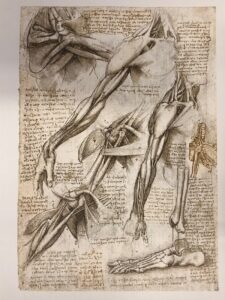 The objective of our Human Anatomy intensive is to follow in this tradition. Thus, we will not only identify anatomical structures of the human body, but we will also analyze the function of those structures and their effect on its outward form. Throughout the workshop, we will reference functional systems in understanding their manifestation in surface anatomy of the figure.
The objective of our Human Anatomy intensive is to follow in this tradition. Thus, we will not only identify anatomical structures of the human body, but we will also analyze the function of those structures and their effect on its outward form. Throughout the workshop, we will reference functional systems in understanding their manifestation in surface anatomy of the figure.
Our focus will be on the skeletal and muscular systems, with some analysis of the major arteries of the venous system. We will work from a variety of sources, including real human skeletons as well as drawing from our collection of anatomical models and plaster casts. Our medium in the course will be various drawing media in large-format sketchbooks as a means of note taking for the course.
Our approach will be in the form of lectures and hands on drawing focusing first on the skeletal system. We will draw from real human skeletons as well as anatomical models. We will explore one area of the body at a time, first in analyzing the skeletal structure of the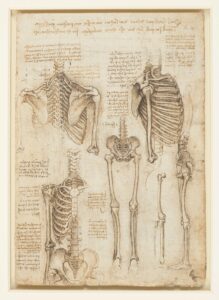 torso. Afterward, we will move on to the head, arms, and legs, as well as hands, and feet. Participants will produce life-sized drawings with charcoal on heavy paper as well as drawings in sketchbooks of details such as joint articulations.
torso. Afterward, we will move on to the head, arms, and legs, as well as hands, and feet. Participants will produce life-sized drawings with charcoal on heavy paper as well as drawings in sketchbooks of details such as joint articulations.
Afterward, the course will focus on the muscular system first through lecture and note-taking then by drawing from anatomical models, plaster casts, and the live model, in the same order. However, we will in exploring the muscular system we will utilize tracing paper and colored pencil, in order to add layers of muscles over our previous skeletal drawings.
In addition to the intensive schedule of daily drawing and lecture, we will make an excursion to the famed Specola Museum in Florence where we will draw from their collection of 16 th to 18th c. wax anatomical sculptures. The incredibly lifelike flayed figures are shockingly lifelike - at once factual and at the same time, powerfully expressive. Here, the wax models will provide an overview of the skeletal and muscular systems as well as an introduction to the venous system.
Throughout the workshop, participants will be housed in the remarkably well-preserved Umbrian hill town of Monte Castello di Vibio. Your workshop package is all-inclusive, providing welcome and departure services and airport transfer from the Rome Fiumicino, Leonardo Da Vinci Airport (FCO). Aboard our comfortable private bus, single occupancy accommodations with shared bath (a wide range of upgrades with private bath are available), 3 meals per day Monday-Thursday, Prosecco brunch and dinner on Saturday and Sunday (no meals are served on Friday, our excursion day. Your workshop includes one excursion per week and many additional options are available on weekends for an additional fee. Of course, 24/7 access to facilities and 24/7 bi-lingual support are provided.
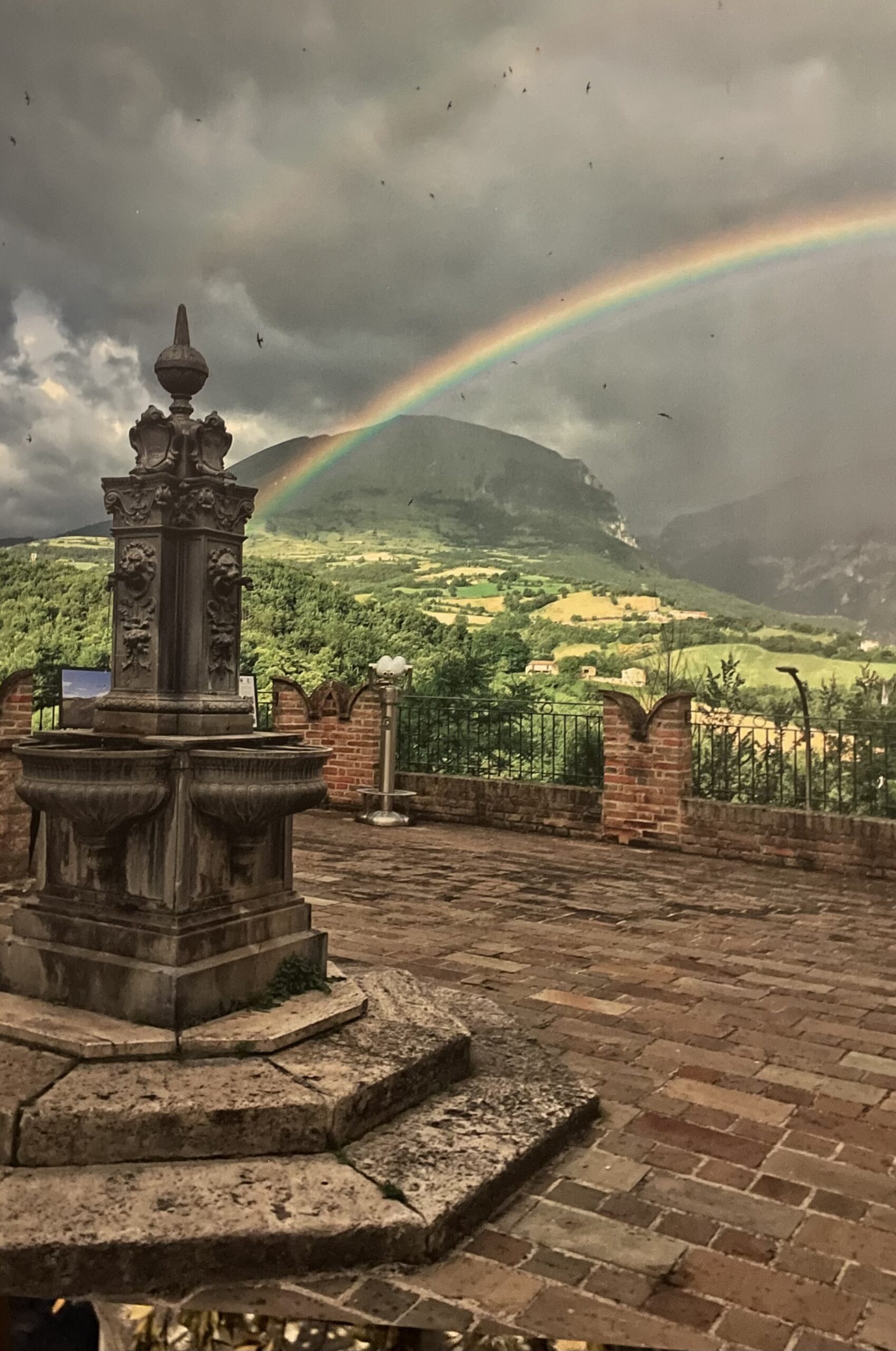 Of Sibyls and Source: Performance in the Landscape is a two-week exploration of live art in geo-mythic sites in the Central Italian regions of Umbria and Marche.
Of Sibyls and Source: Performance in the Landscape is a two-week exploration of live art in geo-mythic sites in the Central Italian regions of Umbria and Marche.
This dynamic residency is guided by research, inquiry, and connection through myth-making and embodied presence in/with/of the land. We will spend three days exploring the Parco Nacional di Sibilline, part of the Apennines named for the Sibyl, or prophetess of antiquity, who is believed to have lived in a cave at the top of Monte Sibilla. This includes a day-long hike to the top of Monte Sibila and an excursion into the Gola dell' Infernaccio, a protected landscape of ancient beech trees and gorges crossed by an ancient pilgrimage trail. We will experience sites of ritual and esoteric rites related to the myth of the Sibyl mentioned in literary sources as well as living local folk traditions dating back thousands of years.
Our time together will also include day trips to the Nera River with Roman ruins whose source is the Monti Sibillini and entrance into the remarkable Frassasi Caves. Performances may take place at any or all of these locations including the impeccably maintained medieval town of Monte Castello di Vibio, our home base. At the conclusion of the residency we will hold a screening and live performance event in Monte Castello di Vibio. Our group includes a collaborative documentarian, misael soto, to help participants realize our work through video documentation as well as other methods in addition to providing critical feedback. (see below).
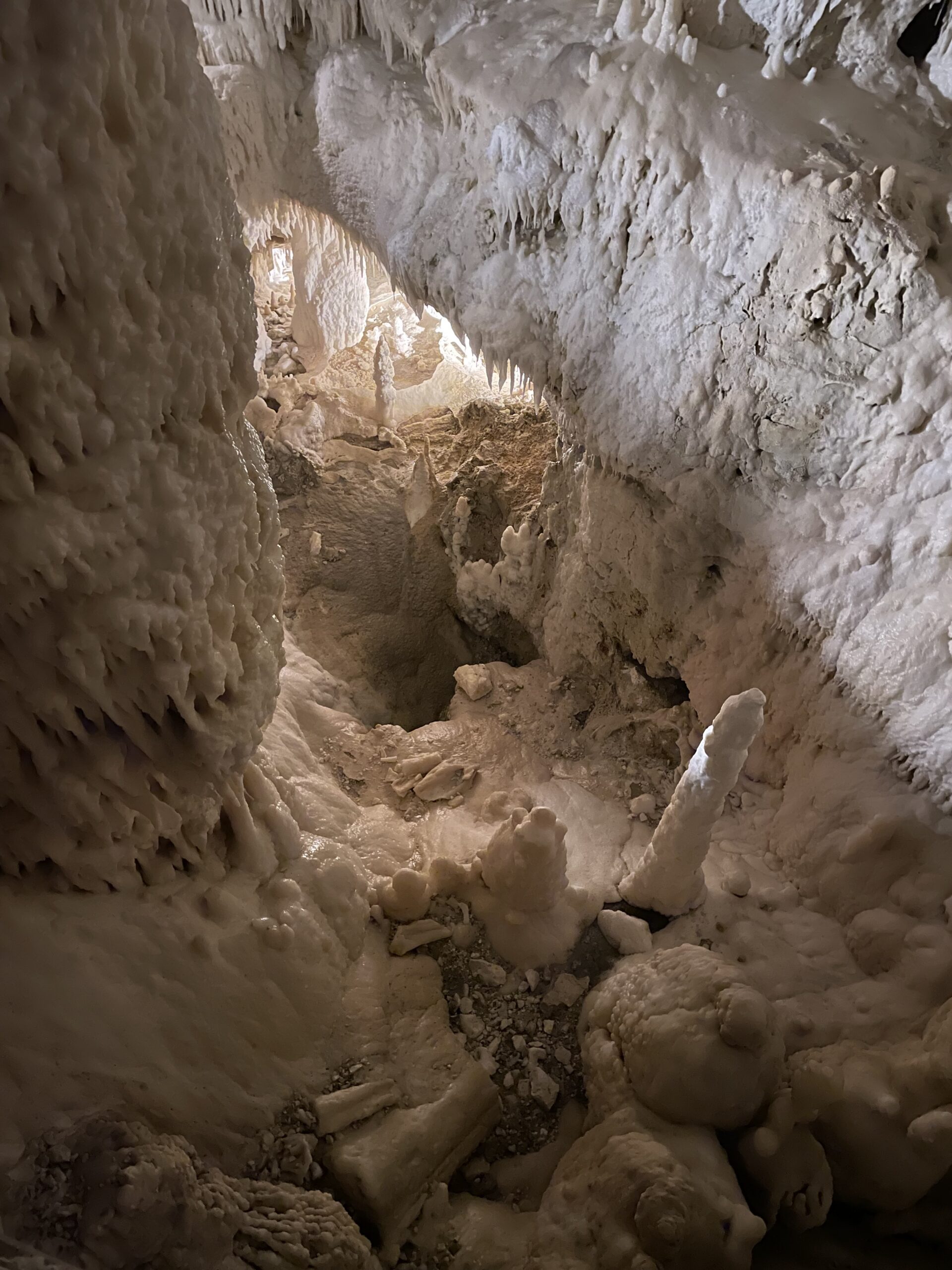 Please note this Residency includes physical complexities: moderate hiking up to an altitude of 7654 ft (2333 m), cold-water wild swimming and a cave visit. Applicants are responsible for their own physical wellbeing. With these logistical and locational considerations in mind, a brief Project Proposal (of approximately 300 words) is required for this workshop. Additionally, please specifically identify project proposals related to Parco Nacional di Sibilline, Nera River and Frassasi Cave for consideration. Please submit the proposal with a current CV and images of recent work (or link to a website) via email to: icarts.info@gmail.com Responses will be issued within 48 hours.
Please note this Residency includes physical complexities: moderate hiking up to an altitude of 7654 ft (2333 m), cold-water wild swimming and a cave visit. Applicants are responsible for their own physical wellbeing. With these logistical and locational considerations in mind, a brief Project Proposal (of approximately 300 words) is required for this workshop. Additionally, please specifically identify project proposals related to Parco Nacional di Sibilline, Nera River and Frassasi Cave for consideration. Please submit the proposal with a current CV and images of recent work (or link to a website) via email to: icarts.info@gmail.com Responses will be issued within 48 hours.
Participants will be housed in the remarkably well-preserved Umbrian hill town of Monte Castello di Vibio. Your Residency package is all-inclusive, providing welcome and departure services and airport transfer from the Rome Fiumicino, Leonardo Da Vinci Airport (FCO), aboard our comfortable private bus; single occupancy accommodations with shared bath (a wide range of upgrades with private bath are available); 3 meals* per day, when on campus, Monday-Thursday; Prosecco brunch and dinner on Saturday and Sunday (when on campus) No meals are served on Friday - our excursion day - unless previously arranged. Your workshop includes the excursions below, however, many additional options are available for an additional fee. Of course, 24/7 access to facilities and 24/7 bilingual support is provided. *Meal service is provided while in Monte Castello only, unless otherwise noted. Meals on excursions and admissions are not included in the cost, unless specifically noted in the itinerary.
Our Documentarian
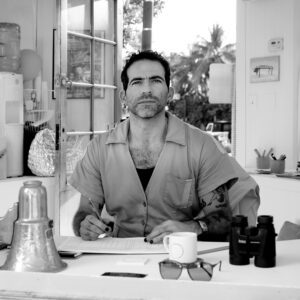 Born in Puerto Rico (1986) and based in Miami, misael soto’s practice interrogates and subverts contextually associated everyday objects and systemic roles, disrupting and manipulating space, systems, and frameworks. The publicly accessible, time-based, and ephemeral work involves interventions made upon existing objects, performative activations, institutional mediations, and is often a combination of these elements. misael received their MFA from the School of the Art Institute of Chicago (2018) and graduated Magna Cum Laude with a Bachelor's Degree in Art History from Florida Atlantic University (2008). misael was the first ever Art in Public Life Resident with the City of Miami Beach's Department of Environment and Sustainability and Oolite Arts, where they founded the Department of Reflection. Beyond their public artworks which they have shown extensively for many years, misael has exhibited at MCA Chicago, Open Engagement 2015, the Museum of Contemporary Art in North Miami, Material Art Fair in Mexico City, David Castillo Gallery in Miami, and Museum of Art Fort Lauderdale, amongst others.
Born in Puerto Rico (1986) and based in Miami, misael soto’s practice interrogates and subverts contextually associated everyday objects and systemic roles, disrupting and manipulating space, systems, and frameworks. The publicly accessible, time-based, and ephemeral work involves interventions made upon existing objects, performative activations, institutional mediations, and is often a combination of these elements. misael received their MFA from the School of the Art Institute of Chicago (2018) and graduated Magna Cum Laude with a Bachelor's Degree in Art History from Florida Atlantic University (2008). misael was the first ever Art in Public Life Resident with the City of Miami Beach's Department of Environment and Sustainability and Oolite Arts, where they founded the Department of Reflection. Beyond their public artworks which they have shown extensively for many years, misael has exhibited at MCA Chicago, Open Engagement 2015, the Museum of Contemporary Art in North Miami, Material Art Fair in Mexico City, David Castillo Gallery in Miami, and Museum of Art Fort Lauderdale, amongst others.

 Stories in Clay with Gerit Grimm
Stories in Clay with Gerit Grimm
 This workshop delves into the precise methods and sophisticated tools essential for crafting a bust directly from a live model. Participants will explore in-depth the intricate anatomy, structural nuances, proportional considerations, cranial aspects, and facial features, while meticulously observing a diverse range of expressions and potential interpretations. Moreover, attendees will gain insight into the time-honored techniques employed by Italian and European old Masters. The program features a blend of interactive group discussions and personalized demonstrations tailored to participants' needs. Open to individuals of all skill levels, this workshop offers a unique opportunity to engage with the art of portraiture.
This workshop delves into the precise methods and sophisticated tools essential for crafting a bust directly from a live model. Participants will explore in-depth the intricate anatomy, structural nuances, proportional considerations, cranial aspects, and facial features, while meticulously observing a diverse range of expressions and potential interpretations. Moreover, attendees will gain insight into the time-honored techniques employed by Italian and European old Masters. The program features a blend of interactive group discussions and personalized demonstrations tailored to participants' needs. Open to individuals of all skill levels, this workshop offers a unique opportunity to engage with the art of portraiture.
 During the workshop, we will also take a day trip to Perugia in order to visit the National Gallery of Umbria and view their remarkable collection. Afterwards, we will stop in Assisi in order to visit the Church of San Francesco, one of the great monuments of Italy, that features works by Giotto and Cimabue as well as an "all-star cast" of early Renaissance artists! As a special treat, we will make a brief afternoon visit to see the incredible marble sculpture inside and outside of the Duomo of Orvieto, one of which the most remarkable examples of Italian Gothic architecture with some of the most renowned late medieval marble sculptures. The opportunity to observe and discuss these great works of Italian art will enhance your understanding of workshop topics, while also enriching your knowledge of the history of art.
During the workshop, we will also take a day trip to Perugia in order to visit the National Gallery of Umbria and view their remarkable collection. Afterwards, we will stop in Assisi in order to visit the Church of San Francesco, one of the great monuments of Italy, that features works by Giotto and Cimabue as well as an "all-star cast" of early Renaissance artists! As a special treat, we will make a brief afternoon visit to see the incredible marble sculpture inside and outside of the Duomo of Orvieto, one of which the most remarkable examples of Italian Gothic architecture with some of the most renowned late medieval marble sculptures. The opportunity to observe and discuss these great works of Italian art will enhance your understanding of workshop topics, while also enriching your knowledge of the history of art.
Participants will be housed in the remarkably well-preserved Umbrian hill town of Monte Castello di Vibio. Your workshop package is all-inclusive, providing welcome and departure services and airport transfer from the Rome Fiumicino, Leonardo Da Vinci Airport (FCO) aboard our comfortable private bus, single occupancy accommodations with shared bath (a wide range of upgrades with private bath are available), 3 meals per day Monday-Thursday, Prosecco brunch and dinner on Saturday and Sunday (no meals are served on Friday, our excursion day. Your workshop includes one excursion per week and many additional options are available on weekends for an additional fee. Of course, 24/7 access to facilities and 24/7 bi-lingual support are provided. Materials for the course will be available in the ICA Art Supply store in Monte Castello.
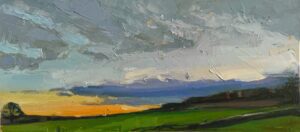 Situated in one of the most beautiful regions of Italy, the idyllic medieval hill town of Monte Castello di Vibio, provides both amazingly picturesque vistas as well as unique challenges for the painter. Majestic mountains stairstep their way into the distance, as their deep green forested hillsides fade to blue gray. The famed, Tiber River, winds like a giant serpent through the valley on its path to Rome, and farm fields and meadows become ribbons on hillsides.
Situated in one of the most beautiful regions of Italy, the idyllic medieval hill town of Monte Castello di Vibio, provides both amazingly picturesque vistas as well as unique challenges for the painter. Majestic mountains stairstep their way into the distance, as their deep green forested hillsides fade to blue gray. The famed, Tiber River, winds like a giant serpent through the valley on its path to Rome, and farm fields and meadows become ribbons on hillsides.
In describing this environment, one cannot help but wax poetic about the opportunities that it provides for the landscape painter. Itis a place both steeped in history, yet constantly changing. Gates open to panoramas that locals refer to as Porta Montanna (“Door to the Mountains”) and the south-facing, Porta Maggio (“Door of May”). To the southwest, where mountain ridges collide above the village of Doglio, the Bocca della Stregna (the Witches Mouth) sometimes reveals the source of its name as the moaning wind circles through its crevices. Castles in the distance appear and disappear in the morning fog as swallows dart in and out of a vista called simply, il Mare (the sea). Far off in the distance to the east lie the mysterious Sibillini Mountains, home of the famed Sybill and the mountain towns of Norcia and the breathtaking valley of Castelluccio, where wildflowers carpet the ground and wolves still howl at night. It is a timeless landscape where past and present meet in the eyes of those lucky enough to experience it. This workshop and your immersion in the surroundings will provide unforgettable experiences. This non-touristed location will allow you to enjoy this small town and its authentic ambiance.
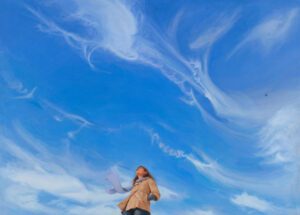 Participants will be housed in the remarkably well-preserved Umbrian hill town of Monte Castello di Vibio. Your workshop package is all-inclusive, providing welcome and departure services and airport transfer from the Rome Fiumicino, Leonardo Da Vinci Airport (FCO). Aboard our comfortable private bus, single occupancy accommodations with shared bath (a wide range of upgrades with private bath are available), 3 meals per day Monday-Thursday, Prosecco brunch and dinner on Saturday and Sunday (no meals are served on Friday, our excursion day. Your workshop includes one excursion per week and many additional options are available on weekends for an additional fee. Of course, 24/7 access to facilities and 24/7 bi-lingual support are provided.
Participants will be housed in the remarkably well-preserved Umbrian hill town of Monte Castello di Vibio. Your workshop package is all-inclusive, providing welcome and departure services and airport transfer from the Rome Fiumicino, Leonardo Da Vinci Airport (FCO). Aboard our comfortable private bus, single occupancy accommodations with shared bath (a wide range of upgrades with private bath are available), 3 meals per day Monday-Thursday, Prosecco brunch and dinner on Saturday and Sunday (no meals are served on Friday, our excursion day. Your workshop includes one excursion per week and many additional options are available on weekends for an additional fee. Of course, 24/7 access to facilities and 24/7 bi-lingual support are provided.
The immersive workshop may be taken for one or for two weeks in duration. In either case, participants will cover the essential aspects of outdoor landscape painting: choosing a motif, working quickly and directly, controlling value and color to create compelling harmonies, and thinking intentionally about form.
We will meet together four days a week, with weekends allowing time for independent painting time and Friday’s reserved for excursions. The first week will include ample instruction and support from the instructor. The second week students will be guided as they approach the landscape with more confidence and clarity. Painting sessions will be scheduled generally: 9am-1pm and 4pm-7pm Monday-Thursday.
Included in the workshop are two excursions: to Florence in Week 1 and to Assisi to see the unforgettable Giotto frescos in the Church of San francesco, in Week 2.
This workshop is directed towards artists, educators, and students interested in exploring the dynamics of classical Italian art and it’s relationship to Contemporary painting. Our broad objective is to share experiences first hand of great works of Italian Art, and consider these experiences in relation to our own studio practice.
Using the remarkable landscape, art and architecture of Umbria and Tuscany as inspiration, this workshop investigates the ways in which perceptual study and abstraction can combine to form contemporary painting language. In the beautiful setting of Monte Castello di Vibio, we begin with drawing and painting in the village and surrounding landscape. Daily work sessions in private studios are augmented with excursions, slide talks, and group critiques. We will travel the “Piero Trail” to see the major frescos of Piero Della Francesca in Arezzo, Sansepolcro and Monterchi. We will also visit Assisi, Perugia and spend two days in Florence to study works by Giotto, Perugino, Fra Angelico and many more great works of Renaissance art.
Midway through our journey, we will further these objectives through viewing paintings by Piero della Francesca in Monterchi, Sansepolcro, and Arezzo, before moving on to Florence. We arrive in Florence, to see the city in the golden light and enjoy a fantastic dinner! The next morning, we will visit the Monastery of San Marco, after which, participants will have the remainder of the day to explore according to their objectives. The following day, proceeding by train to Assisi, we will see the great S.Francis cycle of Giotto in the Basilica of Saint Francis, before we re-join our bus on our return to Monte Castello! The following week, participants will focus on their objectives in our serene village.
Our workshop is centered in the remarkably well-preserved Umbrian hill town of Monte Castello di Vibio.Here, your stay is all-inclusive, from the time our welcome service greets you at the Rome Fiumicino, Leonardo Da Vinci Airport (FCO) - aboard our comfortable private bus - until our bur returns you to FCO and our staff bids you a farewell at the airport, our staff facilitates comprehensive services. In Monte Castello, we allow complete focus by providing: single occupancy accommodations with shared bath (a wide range of upgrades with private bath are available), 3 meals per day Monday-Thursday, Prosecco brunch and dinner on Saturday and Sunday. (Additional options are available on weekends for an additional fee.) Of course, 24/7 access to facilities and 24/7 bi-lingual support are provided. All these factors, allow for an environment of focus and clarity, in which participants are free to integrate all of the experiences of this wonderful country and its extraordinary artistic traditions.

 The most basic and important skill that an artist must acquire is the ability to draw. Drawing from plaster casts of Ancient and Renaissance sculptures is one of the most traditional and effective ways for an artist to enhance their drawing skills.
The most basic and important skill that an artist must acquire is the ability to draw. Drawing from plaster casts of Ancient and Renaissance sculptures is one of the most traditional and effective ways for an artist to enhance their drawing skills.
Here in Monte Castello di Vibio, students will work from plaster casts in our collection. Striving towards accuracy at all times, students will render a drawing of a cast of their choice. The process is intensive and time-consuming, but those willing to put in the hard work will be rewarded with heightened skills that will serve them for the rest of their lives as artists.
As part of the course, participants will make an excursion to view original drawings in the Gabinetto dei Disegni at the Galleria degli Uffizi in Florence. Seeing a drawing touched and executed by the hands of masters such as Michelangelo, Leonardo da Vinci, and Raffaello is an experience one never forgets.
A VERY SHORT HISTORY OF CAST DRAWING
From ancient times until the nineteenth century, the ability to realistically depict the visual world was mandatory for any working artist. An essential part of an artist’s training was drawing from plaster casts of Ancient and Renaissance sculpture. This practice dates back to the late Renaissance, although perhaps the most famous cast drawing program is the one executed in the French academies of the 19th century. Only upon completion of an intensive period of cast drawing were students permitted to work from the live model. The rigor of cast drawing produced countless artists with highly refined skills, many of whom created masterpieces that fill our museums to this day.
Today we have a less structured system but the training to become a highly skilled artist is no less rigorous. Classical programs always involve a heavy emphasis on cast drawing, allowing students to practice proportion, understand shading, and gain an appreciation of the aesthetics of the classical world.
Materials for the course will be available in the ICA Art Supply store in Monte Castello.
 Participants will be housed in the remarkably well-preserved Umbrian hill town of Monte Castello di Vibio. Your workshop package is all-inclusive, providing welcome and departure services and airport transfer from the Rome Fiumicino, Leonardo Da Vinci Airport (FCO) aboard our comfortable private bus, single occupancy accommodations with shared bath (a wide range of upgrades with private bath are available), 3 meals per day Monday-Thursday, Prosecco brunch and dinner on Saturday and Sunday (no meals are served on Friday, our excursion day. Your workshop includes one excursion per week and many additional options are available on weekends for an additional fee. Of course, 24/7 access to facilities and 24/7 bi-lingual support are provided.
Participants will be housed in the remarkably well-preserved Umbrian hill town of Monte Castello di Vibio. Your workshop package is all-inclusive, providing welcome and departure services and airport transfer from the Rome Fiumicino, Leonardo Da Vinci Airport (FCO) aboard our comfortable private bus, single occupancy accommodations with shared bath (a wide range of upgrades with private bath are available), 3 meals per day Monday-Thursday, Prosecco brunch and dinner on Saturday and Sunday (no meals are served on Friday, our excursion day. Your workshop includes one excursion per week and many additional options are available on weekends for an additional fee. Of course, 24/7 access to facilities and 24/7 bi-lingual support are provided.
A knowledge of surface anatomy and its underlying structure has been a central tenet of figurative art throughout history. This is nowhere more evident than in the art of the Italian Renaissance, when man himself became an appropriate subject matter for works of art.
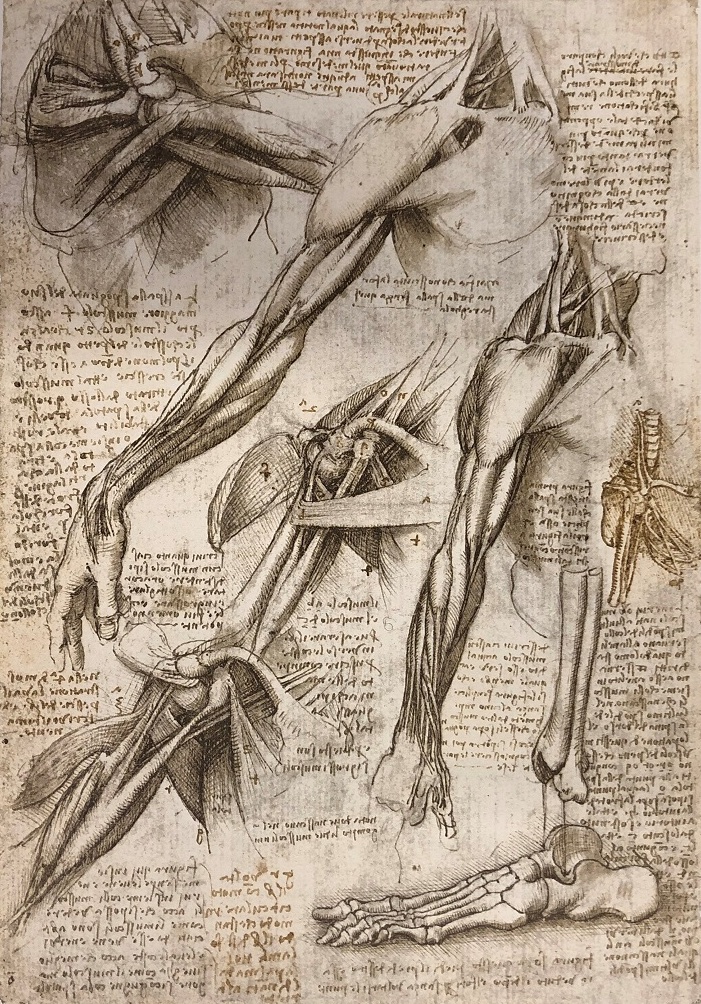 Artists such as Leonardo drew from dissections to better understand the underlying structure of the body and the mechanics of the human figure. Since this time, drawing from the nude has been the bedrock of an artist’s training, and the study of human anatomy continues to be an essential part of that process.
Artists such as Leonardo drew from dissections to better understand the underlying structure of the body and the mechanics of the human figure. Since this time, drawing from the nude has been the bedrock of an artist’s training, and the study of human anatomy continues to be an essential part of that process.
In this two-week workshop, you will draw daily from the live model, improving your ability to see line, proportion and form. You will also study human anatomy in depth, utilizing the rich collection of resources available at the ICA. Your growing understanding of anatomy will enable you to draw contours and render values with a greater degree of accuracy. In short, you will learn to draw better figures.
Six centuries ago, in the Renaissance city of Florence, Michelangelo and Leonardo began the first in depth studies of anatomy since the ancient Greeks. The drawings they created remain among the most beautiful in Western art. You will have the unique opportunity to view original drawings by these masters and others up close during our visit to the Gabinetto dei Disegni at the Uffizi Gallery in Florence.
We will also take a day trip to Rome to visit the Capitoline Museum and the Palazzo Massimo, both of which house Greek sculptures considered the most magnificent ever created. The opportunity to observe and discuss these sculptures will enhance your understanding of anatomy and form, while also enriching your knowledge of the history of the figure in art.
Materials for the course will be available in the ICA Art Supply store in Monte Castello.
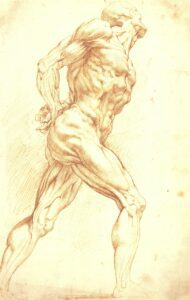 Participants will be housed in the remarkably well-preserved Umbrian hill town of Monte Castello di Vibio. Your workshop package is all-inclusive, providing welcome and departure services and airport transfer from the Rome Fiumicino, Leonardo Da Vinci Airport (FCO) aboard our comfortable private bus, single occupancy accommodations with shared bath (a wide range of upgrades with private bath are available), 3 meals per day Monday-Thursday, Prosecco brunch and dinner on Saturday and Sunday (no meals are served on Friday, our excursion day. Your workshop includes one excursion per week and many additional options are available on weekends for an additional fee. Of course, 24/7 access to facilities and 24/7 bi-lingual support are provided.
Participants will be housed in the remarkably well-preserved Umbrian hill town of Monte Castello di Vibio. Your workshop package is all-inclusive, providing welcome and departure services and airport transfer from the Rome Fiumicino, Leonardo Da Vinci Airport (FCO) aboard our comfortable private bus, single occupancy accommodations with shared bath (a wide range of upgrades with private bath are available), 3 meals per day Monday-Thursday, Prosecco brunch and dinner on Saturday and Sunday (no meals are served on Friday, our excursion day. Your workshop includes one excursion per week and many additional options are available on weekends for an additional fee. Of course, 24/7 access to facilities and 24/7 bi-lingual support are provided.
 Experience some of the great mosaics treasures of the world and create your own mosaics!
Experience some of the great mosaics treasures of the world and create your own mosaics!
Rick Shelley's comprehensive, two-week mosaic workshop welcomes both beginning and advanced mosaic enthusiasts. Each week offers excursions to many magnificent treasures throughout Italy that will lead participants to a deeper understanding of mosaic arts.
Rick will teach you how to create mosaics. At our studios in Monte Castello, learn to shape stone, glass and ceramic into tesserae. Experiment with glues and cements to adhere tesserae onto wooden panels. Work with the beautiful and traditional practice of gold-leafing glass. Design and execute small mosaics using outlines, shadows and highlights - simple images, letters, or symbols are ideal subjects. You will learn first-hand, why mosaic is the most enduring form of pictorial art. From our central location in Italy, tour outstanding monuments and collections in Rome, Ravenna, Venice, and more. Visit mosaic schools and studios where you will meet Italian mosaic artists and study their techniques - all under the guidance of a master-mosaicist, Rick Shelley. (To see Rick in action, see his video:"Making mosaics in Italy"
Castello, learn to shape stone, glass and ceramic into tesserae. Experiment with glues and cements to adhere tesserae onto wooden panels. Work with the beautiful and traditional practice of gold-leafing glass. Design and execute small mosaics using outlines, shadows and highlights - simple images, letters, or symbols are ideal subjects. You will learn first-hand, why mosaic is the most enduring form of pictorial art. From our central location in Italy, tour outstanding monuments and collections in Rome, Ravenna, Venice, and more. Visit mosaic schools and studios where you will meet Italian mosaic artists and study their techniques - all under the guidance of a master-mosaicist, Rick Shelley. (To see Rick in action, see his video:"Making mosaics in Italy"
The two-week format of the workshop, allows participants three options: Week 1 only/ Week 2 only/ or - both Weeks.
On Saturday and Sunday, June 1 and 2, we have the extraordinary opportunity to visit the annual Infiorate of Spello. The Infiorate, is a festival held on the feast of Corpus Cristi. In Spello, the Infiorate is is a breathtaking event in which residents stay up all night on June 1, creating a wondrous "mosaic of flowers." Literally, the streets are covered with carpets of flower petals arranged in designs as well as images. (For wonderful insights into the festival and how these, "flower petal mosaics" come into being, see Michelle Damiani's wonderful website.) The fragile "tapestry" lasts only until June 2. With this schedule in mind, those in Week 1 only will attend the Saturday set up of the event. Those in Week 2, will be present for the procession through the streets of flowers. (Anyone wishing to add an extra day to a one week event, in order to experience both days of the Infiorate, may do so on a "day-rate" basis. Please contact us at: icarts.info@gmail.com for further info.)
Ravenna - a beautifully preserved city with monuments and mosaics from the 6th c. Here we will participate in a day-long workshop with demonstrations on the Ravenna Method.
Venice - where the magnificent church of San Marco, shimmers with mosaics inside and out. Here, we will visit the legendary Orsoni Furnace glassworks, and travel to the island of Murano to experience their incredible glassmaking traditions.
Cost of week 2 (including the Sunday ONLY Infiorate visit) is: € 3531
Both Weeks: The cost of BOTH, week-long workshops is: € 5950 and includes both Saturday and Sunday Infiorate visits.
Studio work in Monte Castello
Between these excursions, the International Center for the Arts provides the perfect atmosphere to experience the mosaic arts. Surrounded by the Italian countryside, the studio at Monte Castello di Vibio is an oasis in which to work and learn.All the while, participants will be housed in the remarkably well-preserved Umbrian hill town of Monte Castello di Vibio. Your workshop package is all-inclusive, providing welcome and departure services and airport transfer from the Rome Fiumicino, Leonardo Da Vinci Airport (FCO). Aboard our comfortable private bus, single occupancy accommodations with shared bath (a wide range of upgrades with private bath are available), 3 meals per day Monday-Thursday while in Monte Castello, Prosecco brunch and dinner on Saturday and Sunday (no meals are served on Friday, our excursion day. On the final day of the workshop, participants will exhibit their work in our, Bocca al Luppo gallery with opening reception provided. Of course, 24/7 access to facilities and 24/7 bi-lingual support are provided. All supplies are included.
Our Mosaics in Italy with Rick Shelley workshop is a rare opportunity to study with a master of the medium in a country renowned for some of its greatest examples. All the while, participants will enjoy a rare immersion in traditional culture, enjoy incredible views made possible by our mountaintop location, delight in gourmet and traditional food prepared fresh by expert chefs from fresh, locally sourced ingredients all accompanied by excellent local wine (or optional selections from our wonderful Wine List, for an additional fee). It is a rare experience, available to only 10 participants.
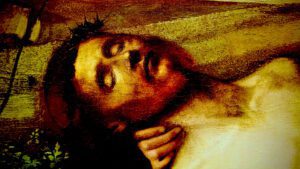 In the 14th c. Sicilian painter, Antonello di Messina brought the new medium of oil painting to Italy. In his travels, he brought the medium to Venice, where artists such as Giovanni Bellini, adopted, and expanded the expressive potential of the medium. Perhaps one of the most influential painting teachers in history, Bellini’s pupils included some of the greatest figures in the history of the medium: Titian, Tintoretto, and Veronese. Their often huge, operatic paintings mark a kind of crowning achievement for the medium, and the processes they developed consequently influenced other great artists and schools of art that included Caravaggio, Rembrandt, Velazquez and countless others who have followed in their path.
In the 14th c. Sicilian painter, Antonello di Messina brought the new medium of oil painting to Italy. In his travels, he brought the medium to Venice, where artists such as Giovanni Bellini, adopted, and expanded the expressive potential of the medium. Perhaps one of the most influential painting teachers in history, Bellini’s pupils included some of the greatest figures in the history of the medium: Titian, Tintoretto, and Veronese. Their often huge, operatic paintings mark a kind of crowning achievement for the medium, and the processes they developed consequently influenced other great artists and schools of art that included Caravaggio, Rembrandt, Velazquez and countless others who have followed in their path.
This workshop will follow the oil painting methods of the great Venetian masters. Working from reproductions, participants will reproduce easel-sized works of the Venetian school of the 16th-18th c. They may also choose to copy a detail from larger Venetian masterworks. To as great an extent possible, students will use the same materials of 15th and 16th c. Venetian artists, many of which will be prepared by hand in class, according to traditional recipes.
Beginning on a uniquely coarse, stretched canvas (approximately 36” x 30”) prepared with rabbit skin glue and white lead, participants will apply a colored ground. This rich, colored surface establishes an overall, atmospheric tonality, that also functions as a very useful neutral color. This then, serves as the basis for the serendipitous approach to color and the remarkable atmospheric effects that are unique to this school of painting.
On this rich surface, participants will transfer perforated drawings with charcoal and a pounce as was done in this time. Afterward, earth colors, carbon black, and white lead ground in oil will be prepared by the class. With these basic colors, an underpainting will be developed using alternating layers of washes and thick impasto areas of white lead. Afterward, rich layers of transparent colors made primarily from pigments produced in in our Pigments and Paint Workshop will be applied. In the process, students will develop an unders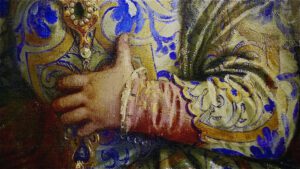 tanding of the important terms, glaze (a dark, thinned color over a lighter surface) and scumble (a thin layer of white lead) as they seek to reproduce the sumptuous color and dramatic brushwork characteristic of the Venetian School.
tanding of the important terms, glaze (a dark, thinned color over a lighter surface) and scumble (a thin layer of white lead) as they seek to reproduce the sumptuous color and dramatic brushwork characteristic of the Venetian School.
During the class participants will have the unique opportunity to see remarkable examples of work by the Venetian masters in person during our excursion to the Pitti Palace in Florence.
Throughout the workshop, participants will be housed in the remarkably well-preserved Umbrian hill town of Monte Castello di Vibio. Your workshop package is all-inclusive, providing welcome and departure services and airport transfer from the Rome Fiumicino, Leonardo Da Vinci Airport (FCO). Aboard our comfortable private bus, single occupancy accommodations with shared bath (a wide range of upgrades with private bath are available), 3 meals per day Monday-Thursday, Prosecco brunch and dinner on Saturday and Sunday (no meals are served on Friday, our excursion day. Your workshop includes an excursion to Florence. Of course, throughout your stay, 24/7 access to facilities and 24/7 bi-lingual support are provided.
Price of the workshop includes all materials needed to produce the painting described above, except brushes, which will be available for sale at ICA in Italy. While it is unlikely that the painting will be completed in the timeframe allowed by the workshop, our goal is to give participants a sufficient understanding of the Venetian process in order to complete the painting at home. As part of the course fee, participants will be issued a unique folding stretcher that allows the painting itself to be folded into a carry-on luggage-sized parcel, even if not fully dry.